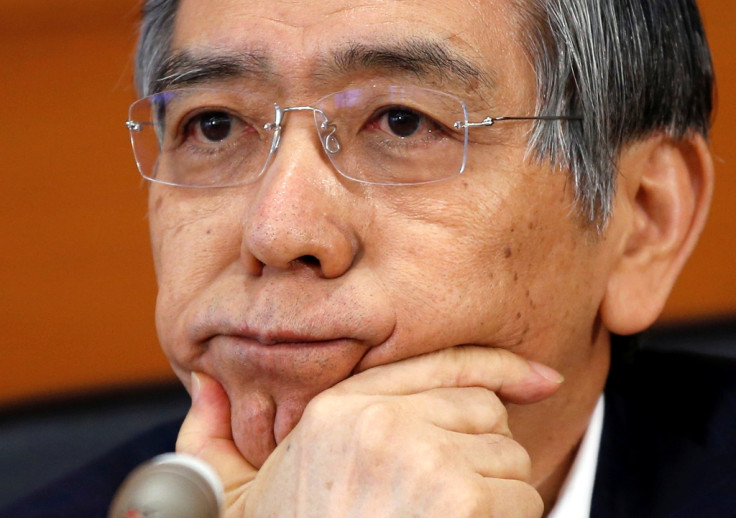Bank of Japan Trims Growth Forecast and Yen Slips

The Japanese yen eased after the Bank of Japan (BOJ) left its stimulus programme unchanged, sticking to prediction that Japanese inflation will approach its 2% target in 2015, but reduced slightly its GDP growth forecast.
The US dollar inched up some 0.1% to 101.62 yen, after rising to 101.65 yen earlier in the day, which is much higher than last week's seven-week low of 101.06 yen.
The euro gained little at 138.32 yen, but was above last week's five-month low of 137.50 yen.
The BOJ has left its monetary policy unchanged, but the central bank trimmed its GDP growth forecast for the financial year to March 2015, amid weak exports and a drop in household spending, which took a beating in the wake of the 1 April national sales tax hike.
The BOJ expects the Japanese economy to expand by 1% in the year to March 2015, instead of the 1.1% it predicted three months ago.
Kuroda's Remarks
BoJ Governor Haruhiko Kuroda told reporters on 15 July that the world's third largest economy was only halfway to meeting the 2% inflation target, and that the BOJ will maintain its quantitative easing (QE) programme until the target was met.
By contrast, Kuroda added, the US Federal Reserve was steadily moving towards policy tightening and he said he saw no reason for the yen to strengthen against the greenback.
Yellen's Testimony
The markets will track Fed chief Janet Yellen's comments before Congress on 15-16 July.
Yellen will deliver the US central bank's latest report on monetary policy and market participants await her remarks for clues on the timing of interest rate hikes in the US, particularly after second-quarter US data showed that the world's leading economy had gained momentum.
Lloyds Bank said in a note to clients: "The yen has risen modestly versus the dollar over the past month. This partly reflects more general dollar weakness but also a risk-off move after recent developments in Portugal."
"The outlook for the Japanese economy remains clouded by uncertainty over the impact of the consumption tax rise. Economic activity, particularly retail spending, slumped in April and the extent of any subsequent recovery is unclear. With Q2 likely to be adversely impacted, it will be some time before the underlying state of the economy becomes apparent.
"Meanwhile, annual CPI inflation has moved above 3%, albeit much of this is due to the tax hike and yen depreciation. The impact of both these factors is set to fade over the year ahead. This points to the eventual need for further monetary stimulus by the BoJ, although its current position is that it may have done enough. We also expect the yen to weaken alongside better US data. USD/JPY is forecast at 105 at end 2014," Lloyds added.
Societe Generale Cross Asset Research said in a note: "...The BoJ will maintain its commitment to raising the monetary base (¥243.4tn as of the end of June) by between ¥60tn and ¥70tn per annum (to ¥270tn at the end of 2014) until its 2% price stability target is both achieved and consistently maintained."
"Among the various effects of QQE, the most widely accepted one is its effect on suppressing long-term (10 yr) government bond (JGB) yields. We analysed how much effect the current QQE has on suppressing nominal 10-yr JGB yield.
"Our estimation model indicates that the 10 yr JGB yield is around 80bp lower, thanks to the effect of QQE. Thus, the BoJ has successfully suppressed the nominal long-term interest rate and lowered real long-term interest rates," SocGen added.
© Copyright IBTimes 2025. All rights reserved.






















